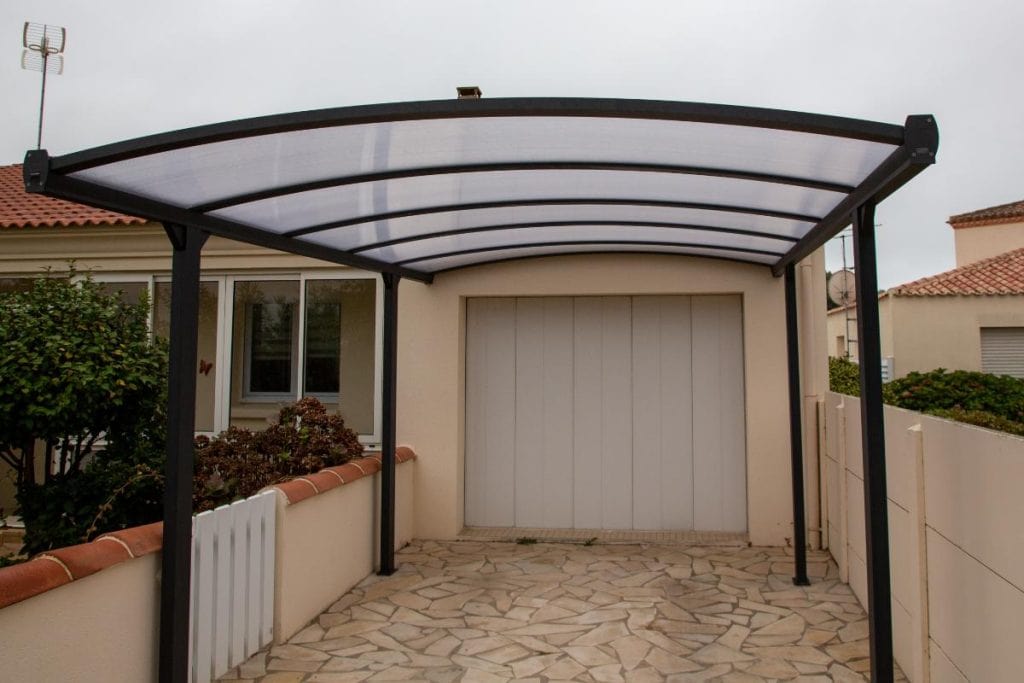Polycarbonate roofing is a fantastic choice for homes, greenhouses, and carports. It’s lightweight, durable, and allows natural light to shine through. However, like any roofing material, it can develop problems over time. Cracks, leaks, and discolouration can crop up, leaving you wondering if a full replacement is necessary. The good news? Many of these issues can be fixed with a bit of DIY know-how.
Let’s go through the most common polycarbonate roofing problems and show you exactly how to fix them—without the need for professional help.

Common Issues with Polycarbonate Roofing
Before you grab your tools, let’s identify the most frequent problems polycarbonate roof owners face:
1. Cracks and Chips
Polycarbonate panels are tough, but they’re not indestructible. Falling branches, hail, or even prolonged exposure to the sun can cause small cracks or chips. Left untreated, these can expand and lead to leaks.
2. Leaks and Water Damage
One of the biggest concerns with any roofing material is leaks. In polycarbonate roofs, water seepage is usually caused by worn-out seals, poorly installed panels, or gaps where the sheets meet.
3. Discolouration and Haze
Over time, UV exposure and dirt build-up can make your once-clear panels look cloudy or yellowed. This affects the amount of light that passes through and can make your roof look aged and worn.
4. Loose or Misaligned Panels
Strong winds and storms can loosen polycarbonate sheets, making them shift out of place. If they’re not secured properly, you might find gaps appearing, leading to leaks or rattling noises when it’s windy.
5. Condensation Build-Up
Poor ventilation can lead to condensation forming on the underside of your roof panels. This can cause moisture damage and even encourage mould growth if left unchecked.
Step-by-Step Guide to Repairing Common Issues
Now, let’s get into the fixes. While this is an introduction, there are more details on repairing polycarbonate roofing from JJRoofing Supplies.
Fixing Cracks and Small Holes
Cracks and small holes can lead to leaks if not repaired quickly. Here’s how to fix them:
- Clean the damaged area with warm, soapy water and let it dry completely.
- Apply a polycarbonate-compatible adhesive or sealant over the crack.
- Smooth out the sealant with a spatula or your finger (wear gloves).
- Let it cure according to the manufacturer’s instructions before exposing it to rain.
For larger cracks, consider replacing the panel entirely.
Stopping Leaks and Replacing Seals
Leaks can be a real headache, but they’re often easy to fix.
- Identify the source of the leak by checking where water is getting through.
- Remove any old or deteriorated sealing material with a scraper.
- Apply a fresh layer of waterproof sealant to the gaps or joints.
- Tighten or replace any loose fasteners that could be causing movement.
If the leak persists, it could be due to improper panel overlap. In that case, reseating the panels may be necessary.
Restoring Cloudy or Discoloured Panels
If your polycarbonate roof has become hazy, follow these steps:
- Mix warm water with mild detergent and gently clean the panels with a soft cloth.
- Use a specialist polycarbonate cleaner for stubborn stains or yellowing.
- Apply a UV-resistant polish to restore clarity and protect against further sun damage.
Avoid using abrasive sponges or harsh chemicals, as they can scratch the surface.
Securing Loose Panels
If you’ve noticed your panels rattling in the wind or shifting out of place, do this:
- Check all screws and fasteners to see if any are missing or loose.
- Replace rusted or missing screws with new ones suited for polycarbonate roofing.
- Ensure proper alignment of the panels before tightening them down.
- Use foam closures if necessary to secure the edges and prevent movement.
A well-secured roof is more resistant to strong winds and bad weather.
Preventing Condensation Issues
Condensation happens when warm air meets a cold surface, and polycarbonate roofs are prone to it. To fix this:
- Increase ventilation by adding ridge vents or small air gaps.
- Ensure correct panel installation to allow for natural airflow.
- Drill small drainage holes in the lower sections of the panel to release trapped moisture.
Good ventilation not only prevents condensation but also helps regulate indoor temperatures.
DIY polycarbonate roof repair isn’t as daunting as it might seem. With the right tools and a bit of patience, you can fix cracks, leaks, and discolouration yourself—saving money and keeping your roof in great condition. However, if the damage is extensive, don’t hesitate to call in a professional.
